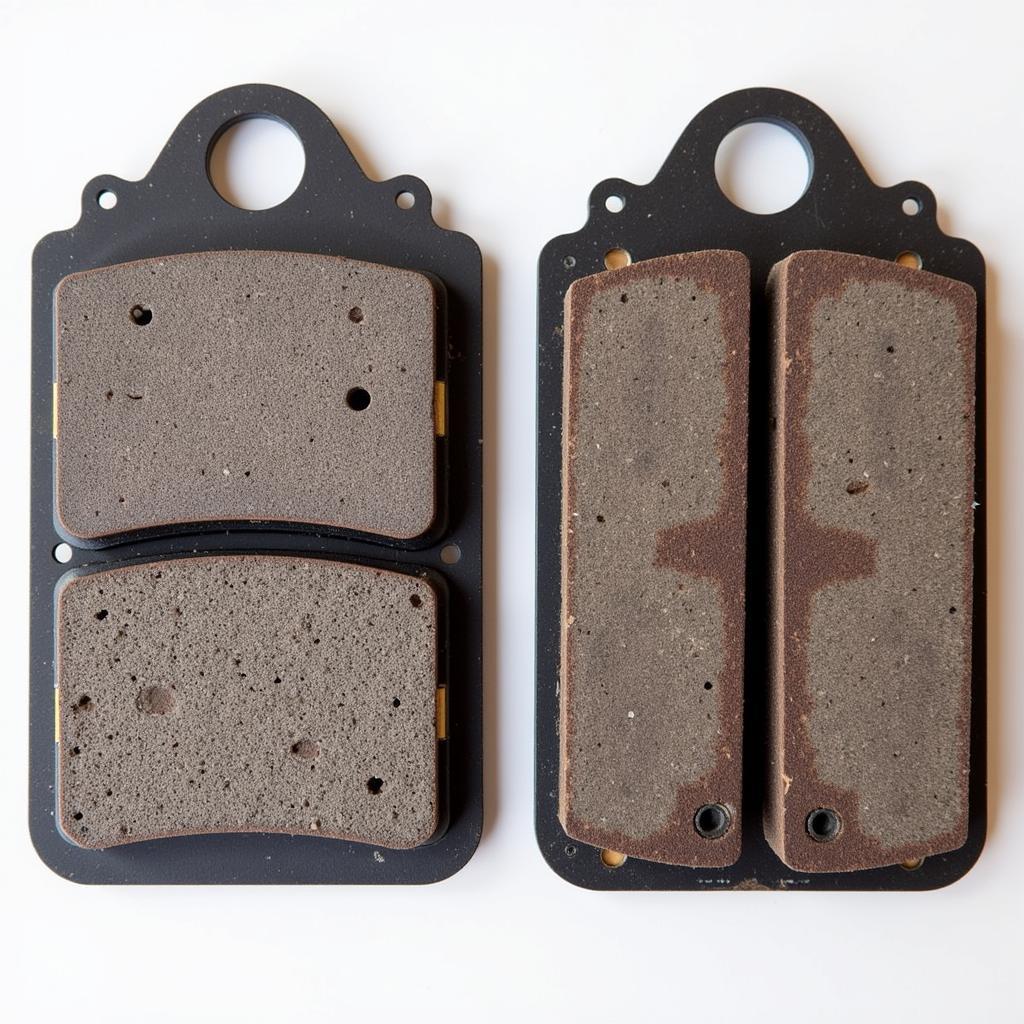The brake warning light on your dashboard is a crucial safety feature, and when it illuminates on your 2016 Hyundai Tucson, it’s vital to address it promptly. Ignoring this warning could lead to decreased braking performance and potentially dangerous driving situations. This comprehensive guide delves into the common causes behind a Hyundai Tucson 2016 brake warning light and provides practical solutions to get you back on the road safely.
Understanding Your Hyundai Tucson’s Brake System
Before diving into the causes, it’s helpful to understand the basics of your Tucson’s braking system. The system is comprised of several key components working together:
- Brake Pedal: Applying pressure to the pedal initiates the braking process.
- Brake Booster: This component amplifies the force you apply to the pedal, making braking easier.
- Master Cylinder: This unit converts the pedal force into hydraulic pressure, which is then distributed to the brakes at each wheel.
- Brake Lines: These lines carry the pressurized brake fluid to the calipers or wheel cylinders.
- Brake Calipers (Disc Brakes) / Wheel Cylinders (Drum Brakes): These components use the hydraulic pressure to push the brake pads or shoes against the rotors or drums, creating friction and slowing the vehicle.
Common Causes of a Hyundai Tucson 2016 Brake Warning Light
The brake warning light on your Tucson can be triggered by a variety of issues:
1. Low Brake Fluid Level
This is the most common cause. Brake fluid is essential for transmitting the hydraulic pressure needed for braking. If the fluid level is low, it could indicate a leak in the system.
Solution: Check the brake fluid level in the reservoir under the hood. If it’s low, carefully add the recommended brake fluid for your Tucson. If you notice a significant drop in fluid level over time, it’s crucial to have a mechanic inspect the system for leaks.
2. Worn Brake Pads
Brake pads wear down over time due to friction. Thin brake pads can trigger the warning light.
Solution: Inspect your brake pads. If they are worn down to the minimum thickness level, it’s time to replace them. It’s generally recommended to have your brake pads inspected every 12,000 miles or as part of your regular maintenance schedule.
3. Faulty Brake Light Switch
The brake light switch is responsible for activating your brake lights when you press the pedal. If it malfunctions, it can also trigger the brake warning light.
Solution: A faulty brake light switch usually requires replacement. This is a relatively simple repair for a mechanic.
 Worn Brake Pads on a Hyundai Tucson
Worn Brake Pads on a Hyundai Tucson
4. ABS Issue
The Anti-lock Braking System (ABS) helps prevent wheel lockup during hard braking. A problem with the ABS, such as a faulty sensor, can trigger the warning light.
Solution: Diagnosing an ABS issue requires specialized equipment. If you suspect a problem with your ABS, it’s best to take your Tucson to a qualified mechanic or dealership for diagnosis and repair.
5. Electrical Fault
Sometimes, the brake warning light might illuminate due to a problem with the electrical system, such as a blown fuse or a wiring issue.
Solution: Check your Tucson’s owner’s manual to locate the fuse box and identify the fuse related to the brake system. If the fuse is blown, replace it with a new one of the correct amperage. If replacing the fuse doesn’t solve the problem or if you suspect a wiring issue, consult a qualified mechanic.
What to Do When the Brake Warning Light Comes On
- Pull over safely: Find a safe location to stop as soon as possible.
- Check brake fluid: If you feel comfortable, carefully inspect the brake fluid level.
- Assess braking performance: Carefully test your brakes while driving slowly. Do they feel spongy, or do you need to press the pedal further than usual?
- Contact a mechanic: Unless you are confident in addressing the issue yourself, it’s safest to contact a qualified mechanic, especially if you suspect a leak, faulty brake components, or an ABS issue.
Remote Diagnostics and Software Solutions
In some cases, modern vehicles like your 2016 Hyundai Tucson may benefit from remote diagnostics and software solutions. Specialized service providers can connect to your vehicle remotely to:
- Read and diagnose trouble codes related to the brake system
- Check for software updates for your Tucson’s Electronic Control Unit (ECU) that might address brake-related issues
- Potentially resolve certain software-related glitches remotely
It’s important to note that while remote diagnostics can be helpful for initial diagnosis and software-related issues, physical repairs and component replacements will still require a visit to a qualified mechanic.
Conclusion
A glowing brake warning light on your 2016 Hyundai Tucson is a serious signal that should never be ignored. Understanding the potential causes and taking prompt action can help ensure your safety and prevent further damage to your vehicle. While some fixes, like adding brake fluid, may be simple, it’s essential to consult a qualified mechanic for any issues that require specialized knowledge or repairs. Remember, a well-maintained brake system is crucial for your safety on the road.
